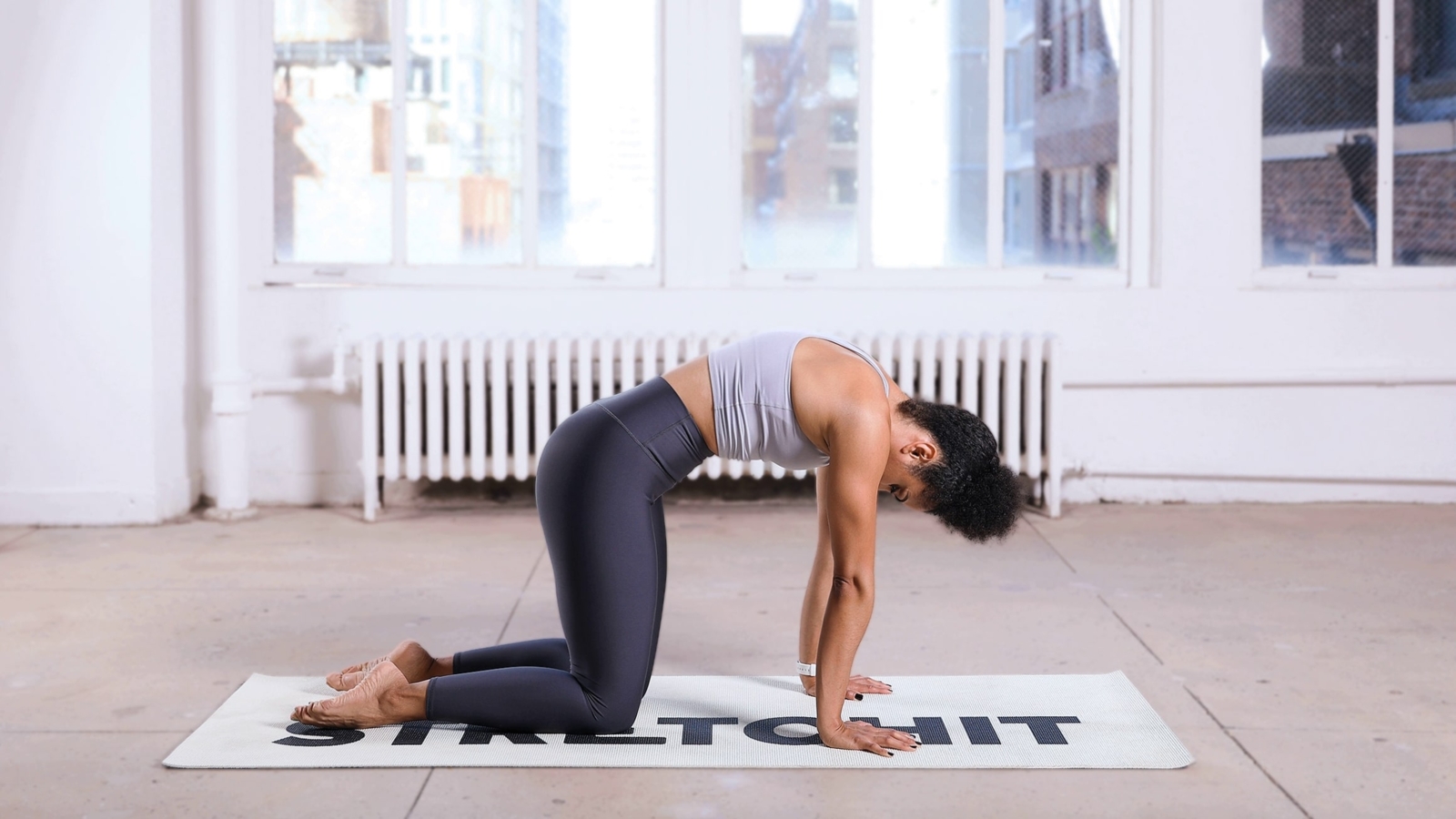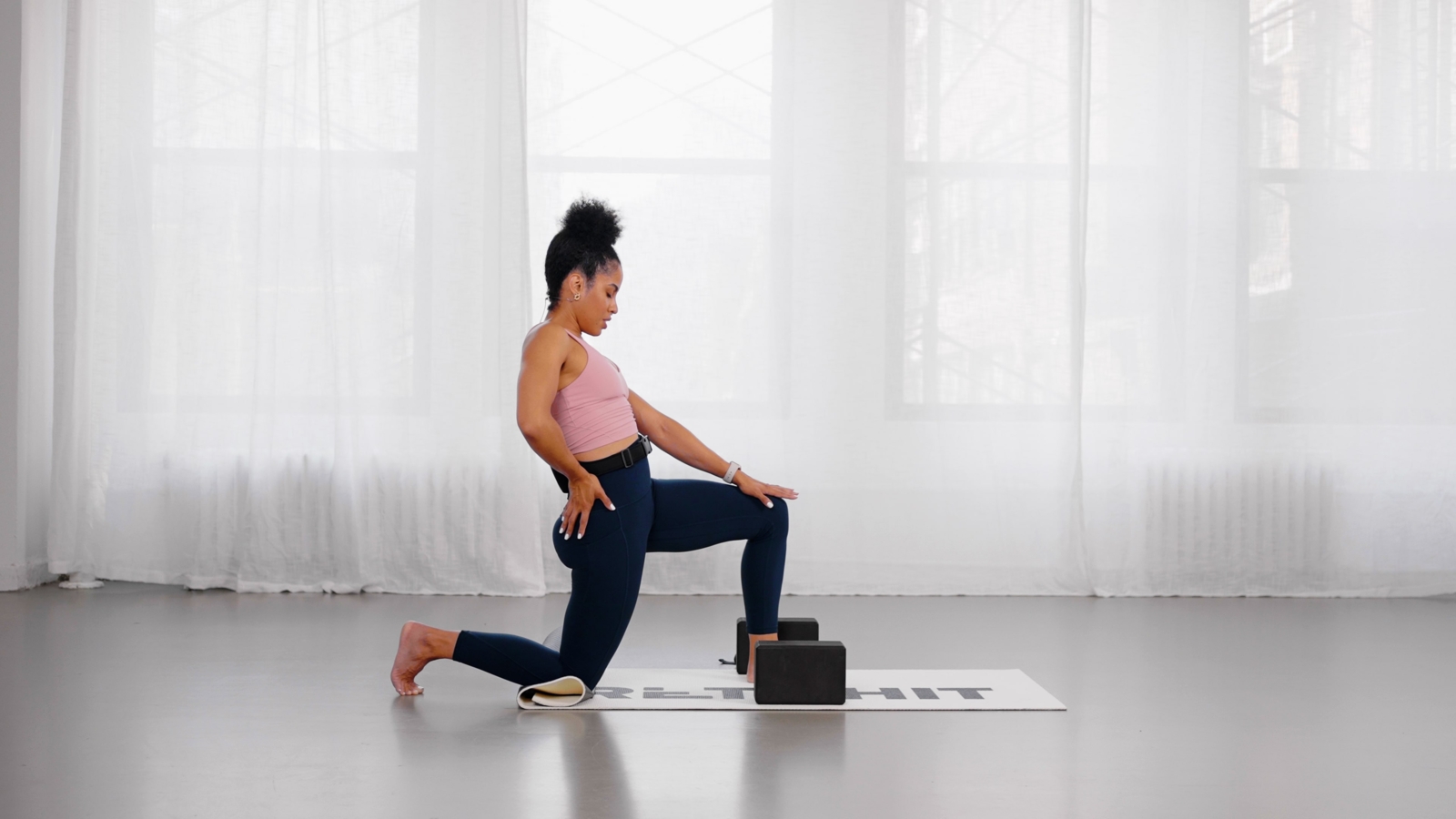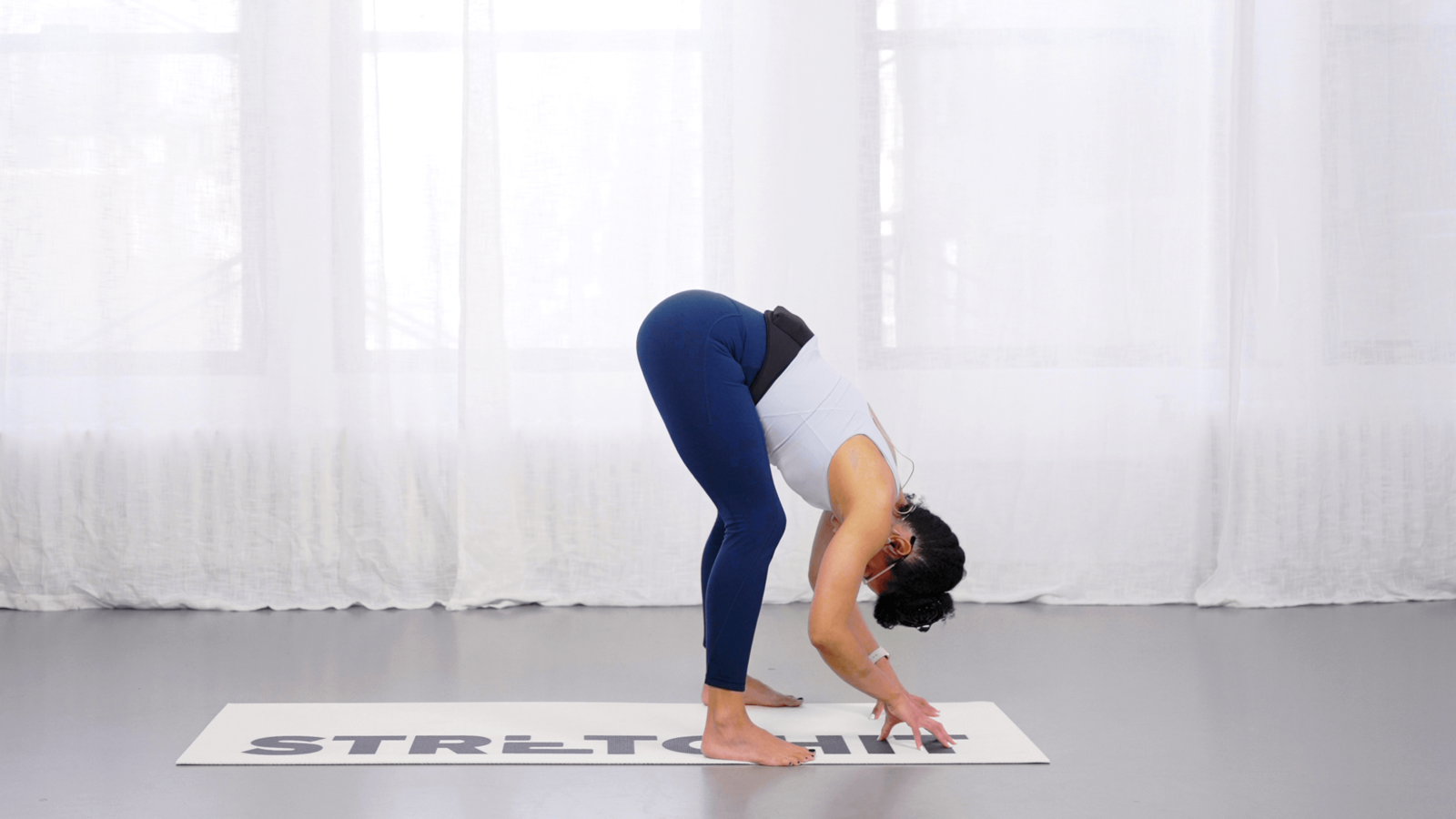Terms and Conditions of Service

With the amount of time we spend hunched over desks and phones, it’s no wonder our spines are staging a rebellion.
Luckily, stretching can help restore balance and bring your posture back in line.
Stretching doesn’t just feel great, it actively counteracts the muscle imbalances that lead to poor posture. Tight chest muscles pull your shoulders forward, weak glutes and core let your pelvis tilt, and tight hamstrings tug on your lower back.
Good posture isn’t about forcing yourself to sit rigidly, it’s about creating alignment so your muscles can do their job without strain.
Below, we’ve got 6 stretches that not only help improve posture but also leave you feeling looser, lighter, and more aligned.
Chest Opener (Doorway Stretch)
The chest muscles (pectoralis major and minor) often tighten from slouching over desks and devices.
This can pull your shoulders forward, leading to a hunched appearance and reduced mobility. Stretching these muscles helps open up your chest and brings your shoulders back into alignment.
How to do Chest Opener
- Find a doorway and stand in the middle.
- Place your hands and forearms on the doorframe, elbows bent at 90 degrees.
- Step one foot forward and gently press your chest forward until you feel a stretch across your chest.
- Hold for 20-30 seconds, then switch feet and repeat.
Cat-Cow Stretch
This dynamic stretch improves spinal mobility and flexibility, essential for healthy posture.
It targets the thoracic spine, often stiff from prolonged sitting, and strengthens the connection between your back and core.
How to do Cat-Cow Stretch
- Start on all fours with your wrists under your shoulders and knees under your hips.
- Inhale as you arch your back, dropping your belly toward the floor and lifting your head and tailbone (Cow).
- Exhale as you round your back, tucking your chin to your chest and drawing your belly button toward your spine (Cat).
- Repeat the movement 6-8 times, moving slowly and with control.

Child’s Pose
This stretch releases tension in the lower back, hips, and shoulders, all areas that bear the brunt of poor posture.
By lengthening the spine and gently stretching the lats and glutes, it helps realign your body.
How to do Child’s Pose
- Kneel on the floor, sit back onto your heels, and stretch your arms forward.
- Rest your forehead on the mat and let your chest sink toward the ground.
- Hold for 30 seconds to 1 minute, breathing deeply.
Hip Flexor Stretch
Tight hip flexors can tilt your pelvis forward, straining your lower back and disrupting your posture.
Stretching them helps restore balance to your pelvis and relieves lower back tension.
How to do Hip Flexor Stretch
- Begin in a lunge position with your right foot forward and left knee on the ground.
- Push your hips forward slightly while keeping your torso upright.
- To deepen the stretch, raise your left arm overhead and gently lean to the right.
- Hold for 20-30 seconds on each side.

Eagle Arms Stretch
This stretch opens up the upper back (trapezius and rhomboids) and shoulders, easing tension from hunching over screens.
It also improves shoulder mobility, crucial for maintaining an upright posture.
How to do Eagle Arms Stretch
- Sit or stand tall. Wrap your right arm under your left and bring your palms together (or as close as possible).
- Lift your elbows slightly while keeping your shoulders down.
- Hold for 20-30 seconds, then switch arms.
Standing Forward Fold
Tight hamstrings can pull on your pelvis, tilting it backward and leading to a rounded lower back. This stretch loosens them, helping your pelvis return to a neutral position.
How to do Standing Forward Fold
- Stand tall, hinge at your hips, and fold forward, letting your head hang toward the floor.
- Keep your knees slightly bent if needed, especially if your hamstrings are tight.
- Hold for 30 seconds, breathing deeply.

Things to Consider
Improving your posture isn’t just about stretching; it’s a lifestyle shift. Avoid prolonged periods of sitting by standing up and moving every 30-60 minutes.
Strength training exercises for your core, glutes, and upper back can also complement your stretches, building strength where it’s needed most.
Be mindful of how you hold yourself throughout the day. Small adjustments, like keeping your screen at eye level or using a lumbar support cushion, can prevent posture problems before they start.
Your posture didn’t worsen overnight, and it won’t improve overnight either. But stick with these stretches, and over time, you’ll feel, and see, the difference.
Get Started with STRETCHIT
Want expert guidance on your posture-improving journey?
The STRETCHIT app offers personalized stretching routines tailored to your needs, helping you build flexibility and mobility. For businesses, STRETCHIT Business delivers wellness programs designed to keep employees feeling their best, even after long hours at a desk.
Try STRETCHIT today and take the first step toward better posture.
